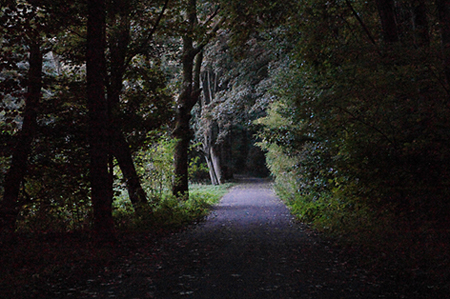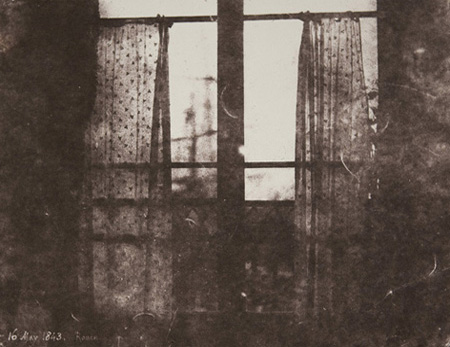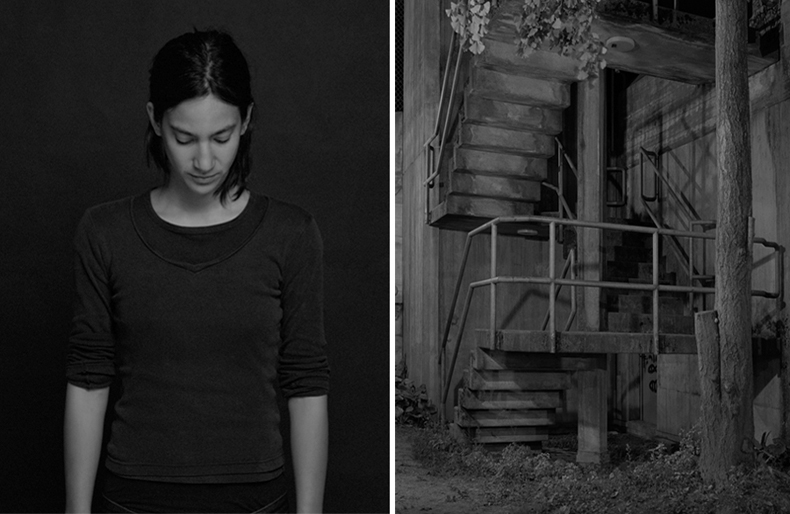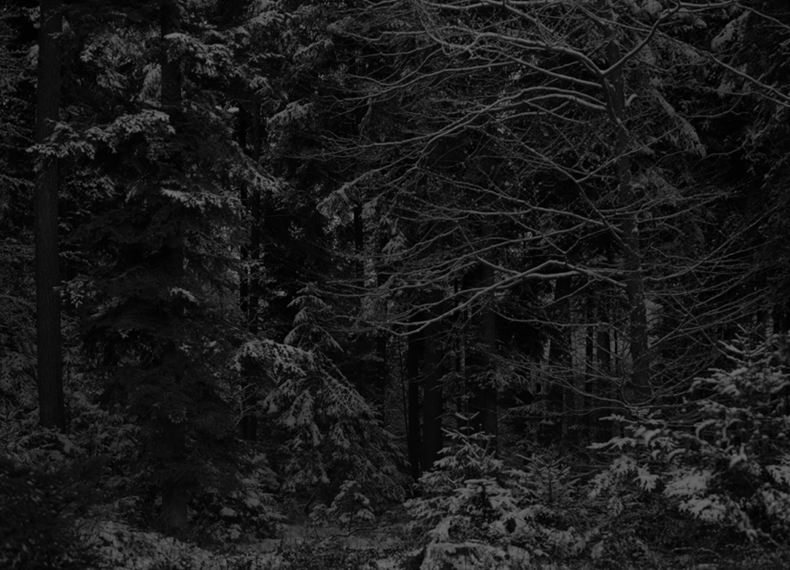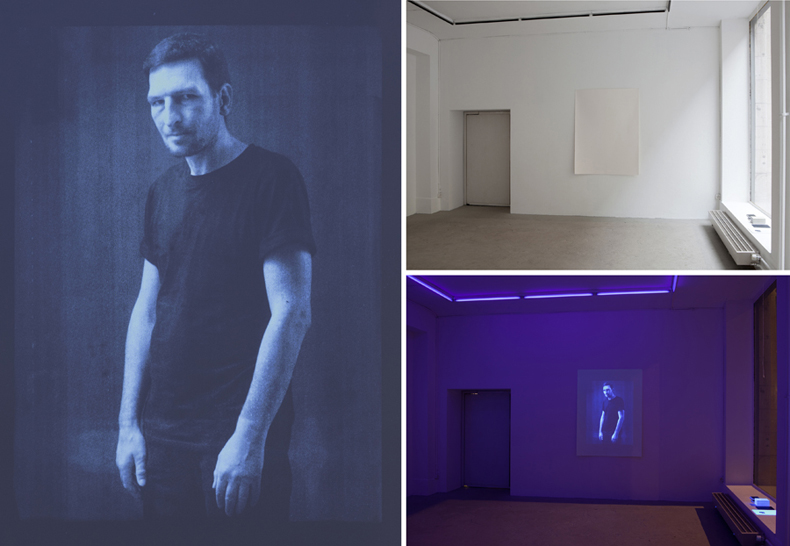User:Nicole Hametner/Graduate Research Seminar 2013-TM4.01
Project Proposal Outline - Oscillating Shadows
Introduction
I will record with a videocamera nightshots and observe how the low light zones in the image can be perceived in a multiscreen installation. (Each screen should be large enough to allow a feeling of being surrounded by the image.) The reduced visibility in the dark scenes demands a look of concentration by the audience.*** The seeking gaze focus the core of the image itself and finds through the temporal moving noise in the underexposure the revealed object lying behind. One by one filmed in a fixed frame, there are urban constructions followed by views of the harbour up to a vast scene of the dark sea.
(*** the impact on the viewer: between fascination and repulsion, the blackness and the vibrations attract like a light, an anticipation linked to the idea of disappearance and loss, an undefined menace, like in the univers of Kafka where the fear of losing control and being confined is linked to a constant vibration of a negative presence, in between an anxious nervous feeling and pure contemplation)
The research I started in the second trimester (short overview of the second trimester) is definitely what I want to deepen in the last year of my master studies. (short rekap) For that I will investigate technical aspects of the digital moving image during the shooting, the postproduction and the installation of the final projection. With focus on the construction of the image, the self-referential language allows asking abstract questions about the so-called dematerialization during the analog digital conversion and the loss of indexicality (short explanation), what leads to a philosophical approach to the image and the notion of time. Besides that I will reflect about the form of the video installation, the role of the observer and read some theory of cinema.
In the final presentation the spectator finds itself in a delimited space surrounded by large projection screens.** The perception lies in the center of my investigation and is challenged by an initially slight disorientation, comparable to a situation at night in a forest where the eye has to adapt to the low light. Then filmed night shots appear on the screens, one with a view of large buildings, another one with a scene of the harbour and one with a view of the seaside. Though instead of having the blinding lights of the city and the industry in the center, the dominant part will be the dark zones in the picture. Because of the slight underexposure of the video there will be temporal moving noise, flickering of pixels, which provokes a vibration in the shadows. The aim is a composition of different low light areas, a result of more or less abstract images with an urban, industrial and natural background. The scale of each screen monumentalize the picture and evokes the idea of standing in front of a full size landscape painting.
(two separate rooms?) In addition to these scenes there will be projections of filmed portraits, either timed in direct reaction to the night shots or screened in a rather loose and open rhythm to each other. For this second part I create a sequence of photographic portraits of women recorded with an additional counter zoom. Concretely the photo camera moves backwards while zooming in or the other way around. Afterwards the looped time sequence presents one image after the other with an interpolation between each one to ensure the illusion of a continuous movement. I use this effect with a black background to focus only on the alteration on the faces. The modification of the perspective provokes an illusive movement, barely recognizable.
Notes about installation: (depending on the technical dispositiv the films are shown either at the same time on different screens or in a sequence on only one) The translucent screen(s) hanged in the middle of the room varie between transparent window to the exhibition space and opaque surface with view on the filmed exterior scene. Its semitransparency resumes the treshold that is inherent to the underexposed videographic images themselves, there the underexposure can be seen as a barrier that opens space for imagination. Hence the observer finds itself at a transitory passage, by his glance simultaneously here and there, he shifts between outside and inner world.
My interest lies in a confrontation of photography and video, from stillness towards moving image, shifting from analog to digital. I want to focus on their media specificity, by which I mean their mechanism, their materiality, how time behaves and where the question about the origin of the image leads. These reflections allow me to articulate thoughts about absence/ presence and disappearance, night/ perception and psychoanalysis and generally the border of the visible.
The crucial unique instant while triggering the photograph turned into duration while using long time exposure, what I used a lot in my previous works. Now through thinking about the construction of the electronic moving image the factor of time again plays an important role and emerges the idea that the image as such is never present as a whole. This intriguing insight links to the role of the observer, its perception and the question where the actual image is created and what does it mean if it never exists all at once? These reflections about the conception of the moving image increase my interest for the origin of the image, which can be understood as foundation that drives me in my research, with the ambition to achieve a good balance between theory and practice to strengthen the completion between concept and production > thesis.
Relation to previous practice
Methodologies: Several interests and points of research over the years have built a background that serves as constant reference and flows into the concrete creation of a specific work. It can be seen as a complex structure, where each part influences mutually the others. For example the project of the construction of the image and the analysis of the behaviour of the medium is based on older photographic works (titles and add images, links) and was then once more animated by curiosity in the digital moving image, what seemed for me to be the counterpart of the stillness in analogue photography. Furthermore the project with the gaze treats with its subtle movement again the idea of presence and absence what constitutes the whole construction of the time-based image and links to my previous work Black Light, 2010(add image). The theme of the night always allowed me to talk about the process, the latent image and to reveal the unseen. To sum up the initial period of research, the theme of disappearance in photography led together with the theme of the „nocturne“ from the romanticism to the subject of the limit of perception. (evt. ergänzen/ präzisieren, allg. rückblickend und wie zu gegenwärtigem projekt gekommen...)
Relation to a larger context/ references
I am approaching with a background in photography the electronic moving image towards the aspired aim to present the work in a videoinstallation.
Steve McQueen, The Running Thunder
- installation with hanged screen in space
- reflections of the presentational mode
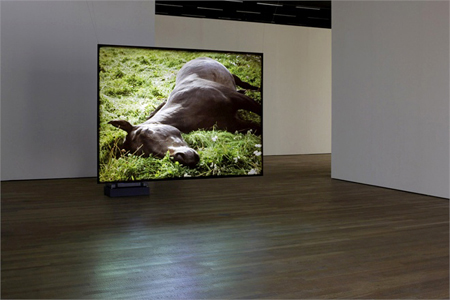
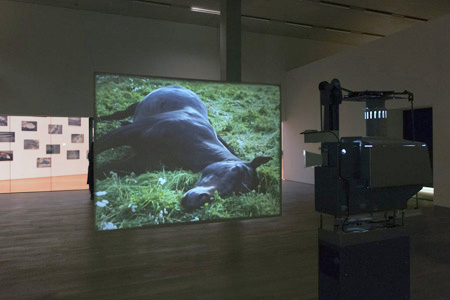
Div. influences and artists to possibly learn more about: Steve McQueen/ Mark Rothko/ Hiroshi Sugimoto/ Raphael Hefti/ Roni Horn/ James Turell/ experimental and silent film/ video art/ Harun Farocki/ Bill Viola/ Michael Snow/ Marie Jo Lafontaine/ Mark Lewis/ Fiona Tan/ David Claerbout/ Douglas Gordon/ Bruce Naumann/ ...
Thesis
The shift from stillness to the moving image is based on my interest of the treshold to something that is in constant movement and thereby articulates the theme of presence and disappearance. In addition to that the juxtaposition of photography and the digital moving image consequently evokes the question of indexicality and its materiality. My essay (the black box/link) written in the second trimester approaches what is being transformed or "lost" in the analog digital conversion. For the thesis I would like to tie in with this point and ask the question about the construction of the image itself. Is the image dissolved during the process of conversion? And when it is argued that the digital moving image is under constant construction and never there as a whole, what does that mean for the origin of the perceived image in our own vision?
keywords: limit of perception, blackness, the viewers experience, treshold of the sensor, role of the codec, the given illusion, transformation or disappearance
Bibliography (with short annotations)
- Maurizio Lazzarato, Videophilosophy:
Construction of the digital image within the notion of time and space. The image is never present as a whole and under constant construction.
- Gilles Deleuze, Time Image:
Chapter about Ozu, empty spaces and charged stillife, pure contemplation, between mental and physical, the real and imagination, the world and the I.
- Tanizaki Junichiro, Praise of Shadows:
About japanese esthetic compared with western enlightenment, where things raises out of the darkness.
- Paul Virilio, L'art à pert de vue:
Overexposure of the real. It comes to a negation of speed in form of complete stillness and from the overall visibility to blindness. Incapacity to see.
- Laura Mulvey, Death 24 times a second:
Film theorist, topic of the gaze
- Kaja Silverman, The threshold of the visible world:
Psychoanalysis and about the time-based image
- E.T.A Hoffmann, Interpretations:
The serapiontic principle to transfer the inner reality. His essay about the mine of Falun depicts the idea to discover in the darkness a brighter light.
Small projects
> Small drafts to understand and reflect about the graduation project

